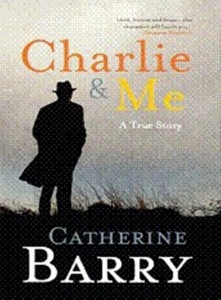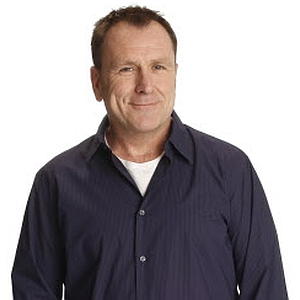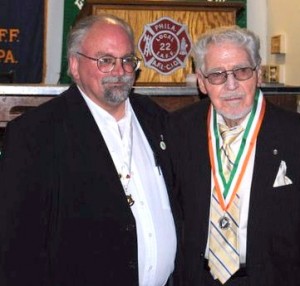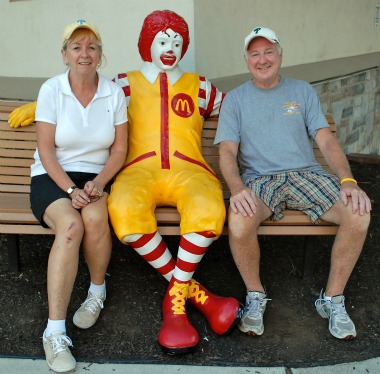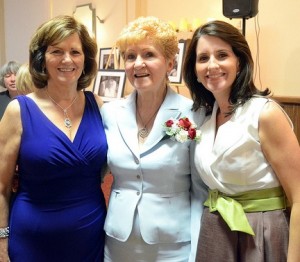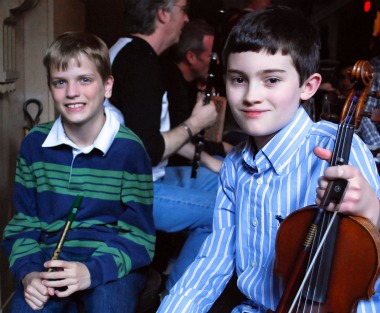All of us have our demons, but few of us ever can, or do, write about them as honestly and eloquently as Catherine Barry has in her new memoir titled “Charlie & Me.”
The writer, Dublin born and bred, has three well-received novels to her name: “The House that Jack Built (2001),” “Null and Void (2002)” and “Skin Deep (2004),” as well as a place on the fund advisory board of the Dove Self-Esteem Awareness campaign. But for her latest book, Barry is mining her own life, and turning the focus to her fierce battle with recovery from alcoholism.
“There’s a saying,” Barry told me by phone from her home in Dublin. “It’s called a ‘dry drunk.’ It’s when someone stops drinking, but they still have the disease. In the beginning, you’re just so thrilled to not be drinking, it’s a honeymoon period. But then, you start having to deal with the issues underneath, what made you drink in the first place.”
Barry began her recovery in 1993, on an April night when she made her way to her first Alcoholics Anonymous meeting. She had finally said the words to herself, and out loud to her physician, “I think I might have a bit of a drinking problem.” Still, she had already turned around to leave the meeting before it began when she felt a staying hand on her shoulder. Charlie Gallagher, who would become her sponsor, her mentor, her lifeline, her savior, and her title character, had found her. And with a smile and the words “Welcome home, Cathy,” he led her back inside.
The decision to begin her story on the first day of her journey to recovery was deliberate; Barry realized that many of the books on the topic of alcoholism start with the destructive road to the bottom, and end at the point where the person decides to seek help. But for Barry, and for everyone facing recovery, that’s where the real fight begins.
“I literally woke up in the middle of the night with the idea for ‘Charlie & Me.’ I was in the middle of writing another book at the time, when I realized that this was what I was meant to be writing. I knew I was onto something, I just felt that with this book. I’m on a mission now to just tell the truth because it needs to be told. I don’t think I would have made it through the first year without Charlie.”
At the time, Barry was the unemployed mother of two small children, and was in the process of removing herself from an abusive marriage: “I had no job, no money, I was in an insane marriage.” She was at her rock bottom.
Charlie, as Barry writes about him with undying love and affection, is a character quite unlike any other. He had to begin their relationship by explaining what a sponsor was, by telling Barry that he would “simply pass on the tools of recovery as they had been passed on to him twenty-five years earlier.” He would help her get, and stay, sober.
He was a man who had equal parts passion for coaxing dilapidated old cars to run for him, for collecting junk that he masqueraded as antiques, for chain-smoking rolled up tobacco cigarettes, for dressing up dapper in suits of many colors and hats of many feathers and for warbling Sinatra tunes off-key. “He wasn’t a saint,” Barry told me, but as she writes in her book, Charlie “imparted his wisdom, warmth and sense of humour to me…His attitude towards life gave me a blueprint—an instruction book on decent living, if you like.”
“The funny thing, I suppose,” Barry laughed, “is that we were a bit like the blind leading the blind. Two sick people trying to help each other, like the patients themselves healing each other. It was a strange paradox that I still don’t fully understand.”
It was Charlie who encouraged Barry to begin really using her writing talent. “I was always writing as a child, always writing diaries. I fell in love with the smell, the ambiance of libraries. I would write short stories and poems…and then put them in the drawer. “
But there was one poem of Barry’s that a friend had had written up and framed for her. Charlie noticed it hanging on the wall one evening, and commented, “God, that’s brilliant…Do you know who wrote it?” When Barry replied that she was the author, Charlie wouldn’t let her off the hook until she’d shown him what else she’d written. He made her type out the poems, and begin the submission process.
“We writers, we’re always the last people to see it in ourselves. I’m always looking for validation from the outside world. I used to pester other authors and say ‘Am I a writer?’ You have to acknowledge it yourself.”
Writing “The House that Jack Built” came about as a bit of a dare, when someone said to Barry, “You know, you could write a book.” She could barely conceive of it, but she persevered.
“The day I got the check for the advance on the first book, I brought the check to the bank and then kept waiting for them to ring me and tell me that it had bounced. It’s almost like a passion for self-destruction that an alcoholic has…practicing forgiveness is something you have to do up until the day you die.”
Barry is unstinting in her honesty as she recounts the darkest days of her early recovery. One chapter in particular recounts her obsession with a boyfriend who had his own issues of addiction.
“A lot of people have spoken to me about that chapter. It’s struck a nerve with many people. It’s the mentality of ‘Now I’ve stopped drinking…what other things can I use to distract myself from the pain that started the drinking in the first place.’ I wanted to fix this man; I’d spent my life trying to fix other people. There was a hole in me that I wanted to fill, and it’s just the same old thing. It’s what I see addiction is, trying to find a way to cope with the pain.”
“And while I’m saying this,” Barry laughed. “I still haven’t figured it all out. Insanity—the definition is doing the same thing over and over again and expecting a different result.”
“I just say, ‘Go for progress and not perfection.’”
Barry’s mission to “just tell the truth” has produced a beautiful, poignant, funny, devastating memoir. Even seeing the end coming, I have to say I sobbed as I finished the book. Her personal triumph is that she continues her recovery, one day at a time, and that she has shared her story with the world. Based around her fight for sobriety and stability, it’s a narrative that will resonate with anyone battling any kind of demons. Although I daresay readers will wish they had their own Charlie by their side for the rumble.
“Charlie said it to me, that I can’t stop from touching the flame, and he was right. That’s the way I am. But I found a higher power and I still continue to rely on that higher power today. Forgiveness is a process.”
Charlie always told Barry that “the writing will cure you” and she has never felt that more strongly than with this book. “I feel like it’s saving my life all over again. This is the road I want to be on…I’ve found my voice now.”
“Charlie & Me” can be ordered online through www.amazon.uk and www.easons.com. And check out Catherine Barry’s facebook page at: http://www.facebook.com/pages/Catherine-Barry/230954423587434#!/pages/Catherine-Barry/230954423587434

